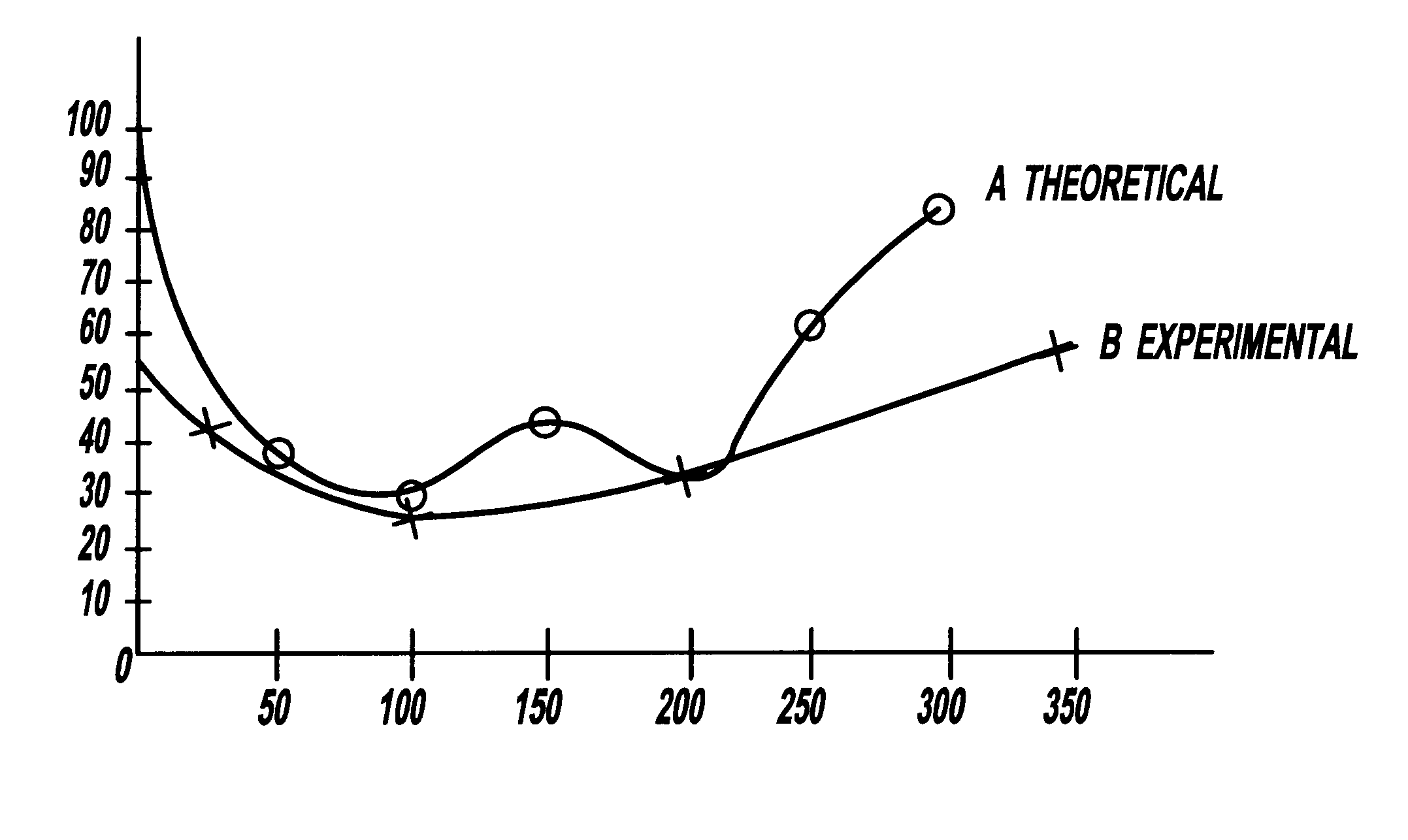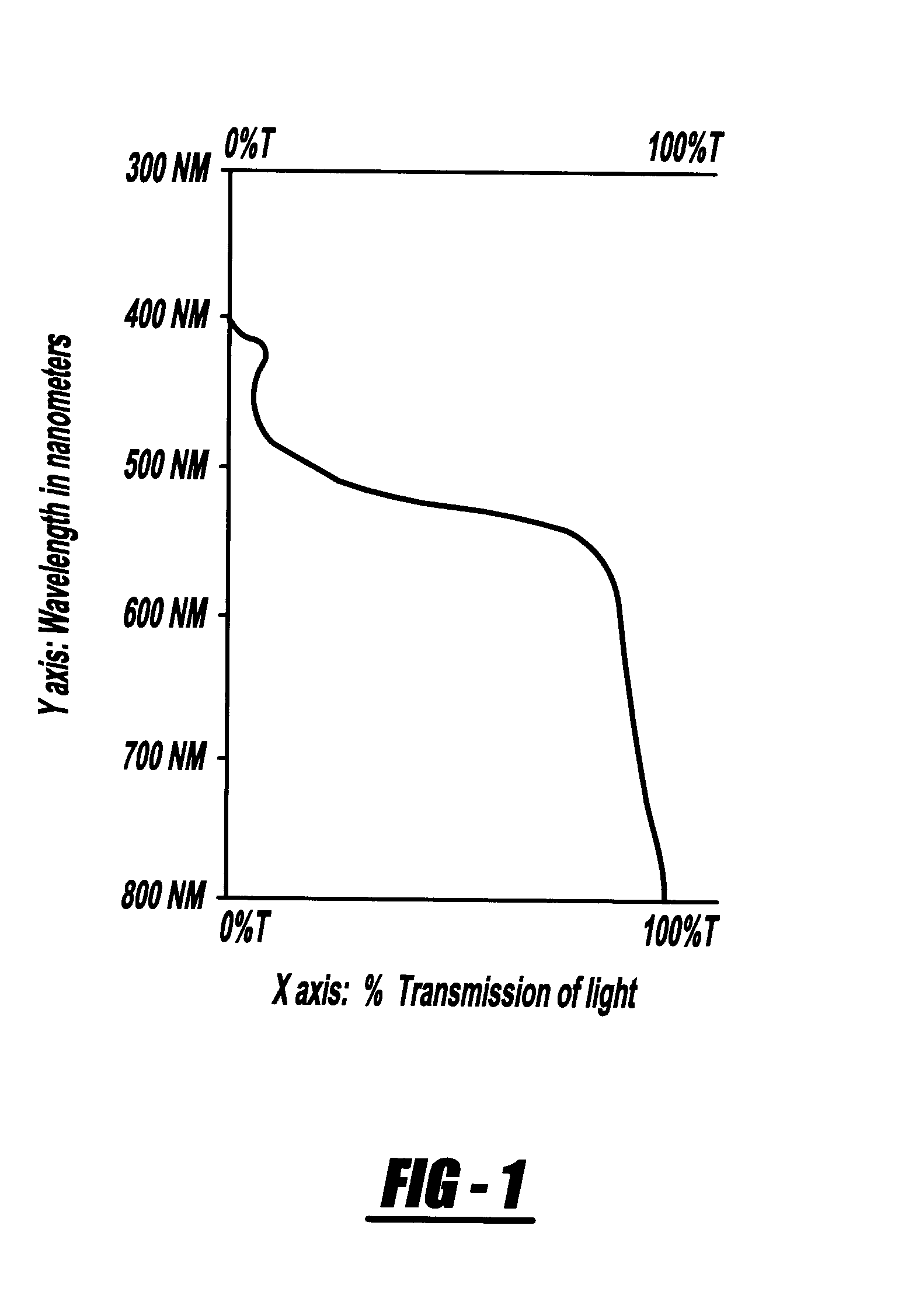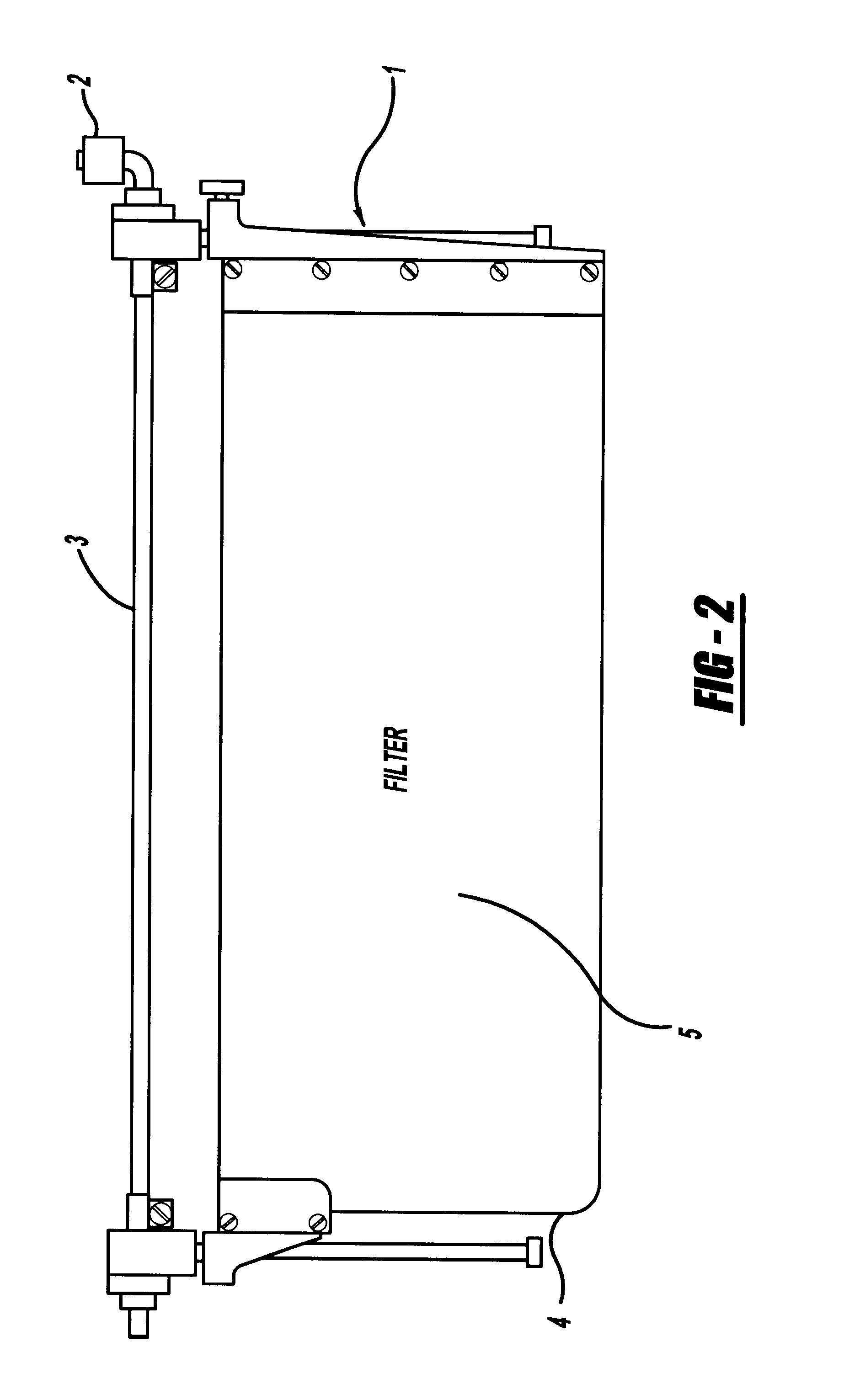Antiglare optical device
an optical device and antiglare technology, applied in the direction of roofs, instruments, lighting and heating apparatuses, etc., can solve the problems of inability to filter, inability to drive, accidents, etc., and achieve the effect of preventing impairment of vision and not reducing the filter
- Summary
- Abstract
- Description
- Claims
- Application Information
AI Technical Summary
Benefits of technology
Problems solved by technology
Method used
Image
Examples
example 1
Accordingly the present invention provides an improved antiglare optical device for automobiles useful during night driving; to be mounted in front of the driver on the automobile's wind shield which comprises of a gradient density absorbing film deposited upon glass / plastic substrate by vacuum coating and also Anti-Reflection (AR) coating on both surfaces of the substrate, providing adjustments on the wind shield for the compensation in the drivers eye-level and also providing means to latch on to the automobile's ceiling when not in use, clearing the steering wheel and the driver's head.
The provisional specifications of the filter are:
Substrate Material: Optical glass, Polycarbonate plastic.
Size: 300.times.150.times.2-3 mm duly mounted inmechanical frame for fitment in the car.
Glass Substrate: Graded absorbing film over coated with AR film on one surface and only AR film on second surface.
Plastic Substrate: Graded absorbing film over coated with AR film on one surface and ...
example 2
Computation of Thickness Gradation
The film gradation is designed by taking into consideration the luminance distribution of light on the wind shield from the approaching vehicle, distance between the two vehicles and the distance of the filter from the center of rotation of the cyc. In this connection, the necessary data has been generated by conducting the requisite experiments. From this data of luminance distribution the thickness gradation of the film in terms of transmission is found for getting gradient density absorbing film. The required gradation profile is given in FIG. 3.
example 3
The glass / plastic substrate after proper cleaning ins placed inside the chamber of a vacuum coating plant in an inclined position with respect to evaporation source. The angle of inclination varies from 5.degree. to 30.degree.. Tungsten spiral filament is used as the source for the evaporation of absorbing material and a mask is suitably positioned above the filament; the chamber is then evacuated to a high vacuum. After achieving the vacuum better than 2.times.10.sup.-5 mb, the material is evaporated by passing the current in the filament to obtain the graded absorbing film on the substrate. Afterwards, AR film is deposited on both surfaces by suitably placing the substrate in the chamber. FIG. 3 depicts the gradation profile of the experimental coating without having AR coating on both surfaces. The data for the profile was obtained by measuring the transmission at 550 nm on various locations of the filter. It can be seen from the figure that at a distance of 1...
PUM
| Property | Measurement | Unit |
|---|---|---|
| wave length | aaaaa | aaaaa |
| wave length | aaaaa | aaaaa |
| wavelength region | aaaaa | aaaaa |
Abstract
Description
Claims
Application Information
 Login to View More
Login to View More - R&D
- Intellectual Property
- Life Sciences
- Materials
- Tech Scout
- Unparalleled Data Quality
- Higher Quality Content
- 60% Fewer Hallucinations
Browse by: Latest US Patents, China's latest patents, Technical Efficacy Thesaurus, Application Domain, Technology Topic, Popular Technical Reports.
© 2025 PatSnap. All rights reserved.Legal|Privacy policy|Modern Slavery Act Transparency Statement|Sitemap|About US| Contact US: help@patsnap.com



